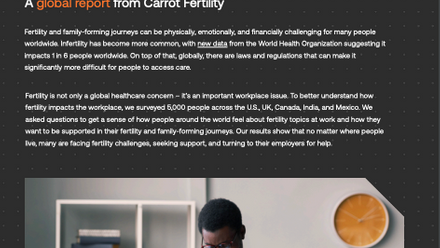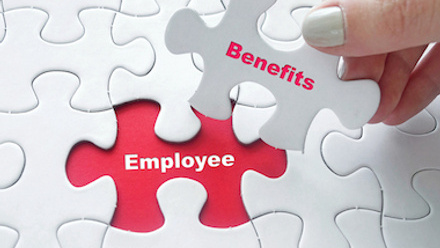Mental health at work: the global picture and what it means for HRDs' employee wellbeing strategies

Here are some of the (worrying) headline statistics:
- depression and anxiety disorders cost the global economy upwards of $1 trillion annually in lost productivity, according to the World Health Organization
- in England, the Thriving at Work report found that around 15% of employees have symptoms of a mental health issue
- nearly half of professionals said that they have considered resigning from a job because it impacted their mental health, according to a 2017 study from CV-Library.
A work environment that fosters poor mental health among employees can be costly in two senses. It can lead to physiological and psychological issues for individual employees that can impact their life far beyond the confines of the workplace. And it can impact the bottom line of businesses too, as sick days increase, productivity plummets and profits suffer.
But, as awareness around mental health increases, there are some positive signs across the workplace that organisations are beginning to prioritise and support good mental health. Whether that’s by rethinking the working environment or implementing effective wellbeing strategies with mental health at their core.
2017s Thriving at Work report laid out six core standards to help achieve this aim. As we take a look at each of these, it’s a good opportunity for us all to think about whether our own organisation’s employee wellbeing strategy can confidently tick them off. And, if not, what can be done to make sure they can move forward.
1) Produce, implement and communicate a mental health at work plan
Without an effective plan, you cannot effectively support employee mental health. Put in place support mechanisms that are clearly defined and communicated to all employees so they know what support is available, and where to get it should they need it. Any key strategical decisions should be discussed in the context of their impact on staff mental health where possible.
2) Develop mental health awareness among employees
Simply put, the more accessible information is, the more likely employees are to engage with it. Making information readily available, easy to find and easy to understand helps employees take responsibility for their own mental health. It makes it clear to staff that their organisation takes mental health seriously.
3) Encourage open conversations about mental health and the support available when employees are struggling
Creating a positive, open environment can help put employees at ease when it comes to discussing mental health-related issues and can reduce the fear they’ll be stigmatized. Making sure the company’s proactive stance on supporting mental health is clear at every stage of an employee’s time with you is important – whether during new employee onboarding, in performance reviews, or simply through initiatives like regular guest speakers on topics like burnout and work-life balance.
4) Provide employees with good working conditions and ensure they have a healthy work-life balance and opportunities for development
Actions, as they say, speak louder than words. Make sure that your organisation is considering the impact on employee mental health when introducing, or changing, new work conditions. Could your business benefit from more flexible working hours? Would new shift patterns simultaneously boost staff mental health and productivity? Do staff feel obligated to reply to emails at any time of the day or night? Is their path to career progression made clear to avoid feelings of stagnation?
5) Promote effective people management through line managers and supervisors
“All the way up the system we have managers who are technically strong but are not very good people managers. They are managers that don’t have very high emotional intelligence.” That was Sir Cary Cooper, President of the CIPD, speaking to Firstbeat earlier this year.
Making sure you have the right managers in place and providing the training for them to develop this emotional intelligence is critical to creating a work environment that promotes good mental health practices. Is this built into your employee wellbeing and training programmes?
6) Routinely monitor employee mental health and wellbeing
The more data you have on your employees’ wellbeing, the more you can fine-tune your wellbeing strategy to produce positive results. This can be done in several different ways – from surveys, to collecting data on things like stress and recovery using wearable technology. This information can inform future decisions and point you in the right direction when creating your mental health action plan.
This article is provided by Firstbeat.
In partnership with Firstbeat Technologies
Firstbeat is the leading provider of physiological analytics for well-being and sports.







